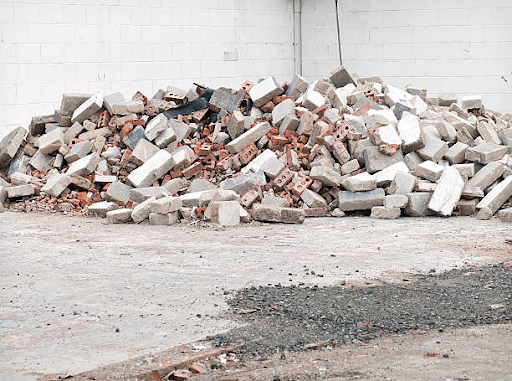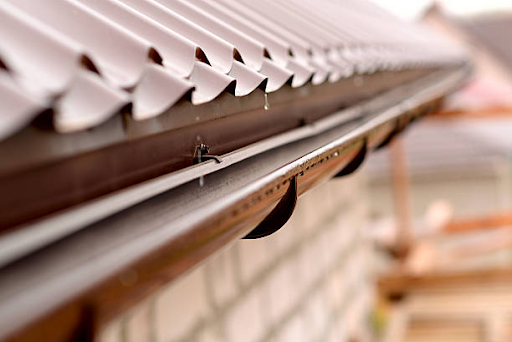In the realm of development and redesigning, utilized building materials have acquired prominence because of their expense viability and natural advantages. We can reduce waste and contribute to a sustainable future by repurposing material. This article explores the top 10 types of used building materials and their various applications. From wood and bricks to metal and glass, each material has its unique characteristics and advantages. By understanding their uses, you can make informed decisions when incorporating these materials into your building projects.
The Top 10 Types of Used Building Materials and Their Uses
The Top 10 Types of Used Building Materials and Their Uses
Wood
Wood is a building material that is used widely and in many ways. Two popular types of used wood materials are plywood and reclaimed wood.
Plywood
Plywood is a versatile building material composed of thin layers of wood veneer glued together. It offers strength, stability, and resistance to warping, making it ideal for various construction projects. Used plywood can be an excellent choice for cost-effective solutions without compromising quality. It can be repurposed for subflooring, sheathing, furniture, and even decorative elements. By choosing used plywood, you not only save money but also contribute to sustainable practices by reducing waste.

Reclaimed Wood
Reclaimed wood refers to salvaged wood from old buildings, barns, or other structures. It carries a unique character, history, and charm that cannot be replicated by new materials. Used reclaimed wood provides a sustainable and eco-friendly option for interior design, flooring, furniture, and accent walls. Each piece tells a story and adds warmth and authenticity to your space. By incorporating reclaimed wood into your projects, you not only embrace sustainability but also create a timeless and distinctive aesthetic that sets your design apart.
Bricks
Bricks have been used as a primary building material for centuries. When it comes to used building materials, two types of bricks stand out: clay bricks and concrete bricks.
Clay Bricks
Clay bricks are a traditional and widely used building material known for their durability, thermal insulation properties, and aesthetic appeal. Made from natural clay and fired in a kiln, clay bricks offer strength and stability for various construction applications. Their natural color variations and textures add character to buildings and walls. Clay bricks can be used for both structural and decorative purposes, including building facades, interior walls, fireplaces, and garden features. Their ability to withstand harsh weather conditions and provide excellent thermal performance makes them a popular choice in construction projects.

Concrete Bricks
Concrete bricks are versatile and robust building materials made from a mixture of cement, sand, and aggregates. They offer strength, durability, and resistance to fire, moisture, and pests. Concrete bricks can be manufactured in various sizes and shapes to suit different construction needs. They are commonly used in load-bearing walls, retaining walls, paving, and landscaping projects. Concrete bricks provide stability, sound insulation, and low maintenance requirements. Their uniformity, affordability, and ease of installation make them a practical choice for both residential and commercial buildings.
Metal
Metal is a durable and recyclable building material that can be reused in multiple ways. Two common types of used metal materials are steel and aluminum.
Steel
Steel is a profoundly flexible and solid structure material that offers extraordinary strength and primary trustworthiness. It is commonly used in various construction applications, including buildings, bridges, infrastructure, and manufacturing. Steel is prestigious for its capacity to endure outrageous circumstances, settling it as a dependable decision for durable designs. From high-rise buildings to industrial facilities, steel provides the necessary strength and stability to support large-scale projects. Whether it's for its structural capabilities or aesthetic appeal, steel remains a popular choice in the construction industry.
Aluminum
Aluminum is a lightweight and corrosion-resistant metal that offers numerous advantages in the construction field. Because of its exceptional strength-to-weight ratio, it is ideal for industries like transportation and aerospace where weight reduction is crucial. Aluminum is frequently used in construction for windows, doors, roofing, and siding. Its corrosion resistance ensures durability, even in harsh environments. Aluminum's malleability allows for intricate designs and easy fabrication, providing flexibility in architectural projects. Additionally, aluminum is highly recyclable, contributing to sustainability efforts in the construction industry. With its excellent properties and versatility, aluminum continues to be a preferred choice for modern construction projects.
Glass
Glass is not only a functional building material but also an aesthetic element. Two types of used glass materials worth considering are stained glass and tempered glass.
Stained Glass
Stained glass is a mesmerizing kind of decorative glass that has been used for centuries to make buildings look better and have more artistry in them. Created by adding metallic salts to molten glass, stained glass exhibits vibrant colors and intricate designs. The light passing through the stained glass creates a stunning visual display, casting colorful patterns and images onto surrounding surfaces. Used stained glass can be repurposed to create stunning windows, decorative panels, lamps, and art installations. Its timeless appeal and ability to evoke a sense of elegance and creativity make stained glass a popular choice for architectural and interior design projects.
Tempered Glass
Tempered glass is a type of safety glass that undergoes a specialized heat treatment process to increase its strength and durability. It is designed to shatter into small, rounded pieces upon impact, reducing the risk of injury from sharp glass fragments. Used tempered glass offers a range of applications and benefits in the construction industry. It is commonly used for windows, glass doors, shower enclosures, and furniture. The enhanced strength and safety features of tempered glass make it ideal for environments where safety is a concern. Additionally, its resistance to thermal stress and high-impact resistance contributes to its popularity in architectural and interior design projects.
Plastics
Plastics are versatile materials that find numerous applications in the construction industry. Two types of used plastic materials commonly utilized are PVC and recycled plastic.
PVC
Polyvinyl chloride, or PVC for short, is a synthetic plastic that is widely utilized in the construction sector due to its durability, adaptability, and reasonable price. It offers excellent resistance to moisture, chemicals, and fire, making it suitable for various applications. Used PVC materials can be repurposed in sustainable building projects, such as plumbing systems, electrical insulation, window frames, and exterior cladding. The recycling process for PVC involves grinding the material into small pieces, which can then be melted and molded into new products. Utilizing used PVC helps reduce waste and conserves valuable resources, contributing to a more environmentally friendly construction industry.

Recycled Plastic
Recycled plastic is a sustainable alternative to conventional plastic derived from post-consumer waste. By recycling plastic materials, we can divert waste from landfills and conserve natural resources. Used recycled plastic can be transformed into durable and versatile building materials, such as decking, fencing, roofing tiles, insulation boards, and even structural components. It offers benefits such as resistance to rot, decay, and pests, while also reducing the demand for virgin plastic production. Incorporating recycled plastic into construction projects promotes a circular economy and contributes to a greener, more sustainable future.
Roofing Materials
Roofing materials play a vital role in protecting buildings from the elements. Two common types of used roofing materials are asphalt shingles and metal roofing.
Asphalt Shingles
Asphalt shingles are a common roofing material because they are inexpensive, long-lasting, and simple to install. Made from a combination of asphalt, fiberglass, and ceramic granules, used asphalt shingles can still offer excellent weather protection and insulation for your home. They are accessible in different styles and varieties, permitting you to pick a plan that supplements your home's feel. Repurposing used asphalt shingles for roofing projects not only reduces waste but also provides a cost-effective solution for homeowners looking to enhance their property's curb appeal while ensuring reliable protection against the elements.

Metal Roofing
Used metal roofing is a sustainable and durable choice for residential and commercial buildings. Metal roofs offer exceptional longevity, weather resistance, and energy efficiency. They are available in various metals such as steel, aluminum, and copper, providing different aesthetic options. Repurposing used metal roofing allows for cost savings, as the material retains its strength and performance over time. Additionally, metal roofs are lightweight, making them suitable for both new construction and retrofitting projects. By choosing used metal roofing, you can enjoy long-lasting protection, reduce environmental impact, and add a touch of modernity to your property.
Flooring Materials
Flooring materials significantly impact the aesthetics and functionality of a space. Two types of used flooring materials worth considering are hardwood flooring and ceramic tiles.
Hardwood Flooring
Hardwood flooring is a popular choice for its timeless appeal, durability, and natural beauty. With its warm tones and varied grain patterns, used hardwood flooring adds character and elegance to any space. Whether it's oak, maple, or cherry, repurposed hardwood can be sanded, refinished, and installed in new settings, breathing new life into old materials. Used hardwood flooring is ideal for creating a classic and inviting atmosphere in homes, offices, or commercial spaces. Its durability ensures longevity, making it a sustainable option that withstands the test of time while providing a touch of luxury and sophistication.
Ceramic Tiles
Ceramic tiles offer versatility, durability, and a wide range of design possibilities. Used ceramic tiles can be repurposed for various applications, including flooring, backsplashes, and decorative accents. Their water resistance and easy maintenance make them ideal for kitchens, bathrooms, and high-traffic areas. Used ceramic tiles come in various sizes, colors, and patterns, allowing you to create unique and visually appealing surfaces. By reusing ceramic tiles, you not only reduce waste but also contribute to sustainable building practices. Transform your space with the beauty and functionality of repurposed ceramic tiles, bringing style and longevity to your floors and walls.
Insulation Materials
Insulation materials are crucial for maintaining comfortable indoor temperatures and energy efficiency. Two types of used insulation materials commonly used are fiberglass insulation and cellulose insulation.
Fiberglass Insulation
Fiberglass insulation is a widely used type of insulation material known for its excellent thermal and soundproofing properties. Composed of tiny glass fibers, it is available in batts, rolls, or loose-fill form. Fiberglass insulation is easy to install and offers high resistance to heat transfer, helping to maintain comfortable indoor temperatures while reducing energy costs. It is commonly used to insulate walls, attics, floors, and ceilings in residential and commercial buildings. With its durability and effectiveness, fiberglass insulation contributes to energy efficiency and creates a more comfortable and quieter living or working environment.
Cellulose Insulation
Cellulose insulation is an environmentally friendly and effective insulation material made from recycled paper fibers, typically sourced from newspapers and cardboard. It is treated with fire-retardant chemicals to enhance its safety. Cellulose insulation is often installed as loose-fill or blown-in insulation, filling gaps and crevices to create a seamless barrier against heat transfer. Its high density and ability to reduce air leakage make it an excellent choice for both thermal and acoustic insulation. Cellulose insulation offers energy efficiency, soundproofing, and sustainability, making it a preferred option for eco-conscious homeowners and builders alike.
Conclusion
Using used building materials can be a practical, sustainable, and cost-effective choice for construction and renovation projects. From reclaimed wood to salvaged metal, there is a wide variety of materials that can be repurposed and given a new life. By embracing the use of used materials, we contribute to a more sustainable future while adding unique character and charm to our built environments.
FAQs (Frequently Asked Questions):
Q1. Are used building materials of good quality?
A1. Used building materials can vary in quality. It's important to carefully inspect and evaluate the condition of the materials before purchasing.
Q2. Can used building materials be as durable as new materials?
A2. Yes, many used building materials can be just as durable as new materials, especially when sourced from reputable suppliers and properly maintained.
Q3. Where can I find used building materials?
A3. You can find used building materials at salvage yards, architectural salvage stores, online marketplaces, and through local classified ads.
Q4. Are used building materials more affordable than new materials?
A4. Yes, used building materials are often more affordable than new materials, making them a cost-effective option for construction projects.
Q5. Can I use used building materials for commercial projects?
A5. Yes, used building materials can be used for both residential and commercial projects, as long as they meet the required building codes and regulations.
